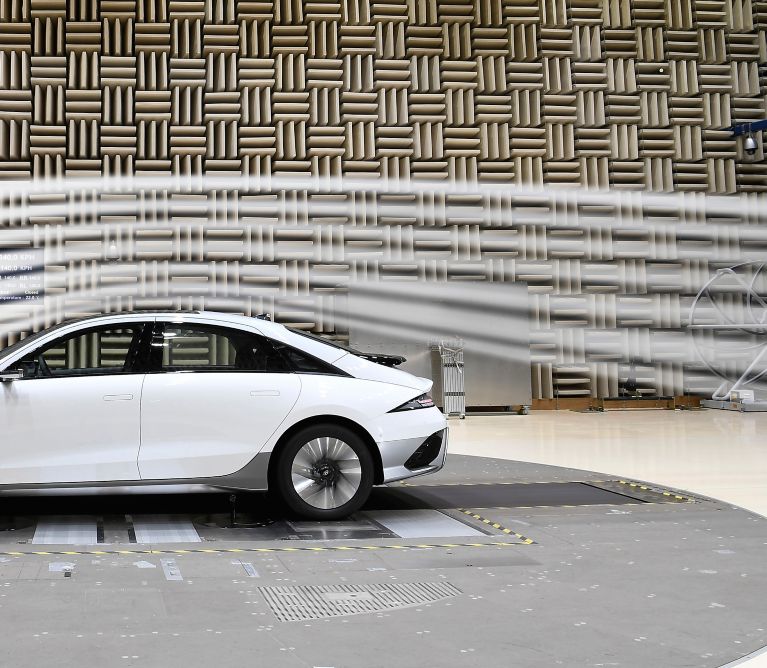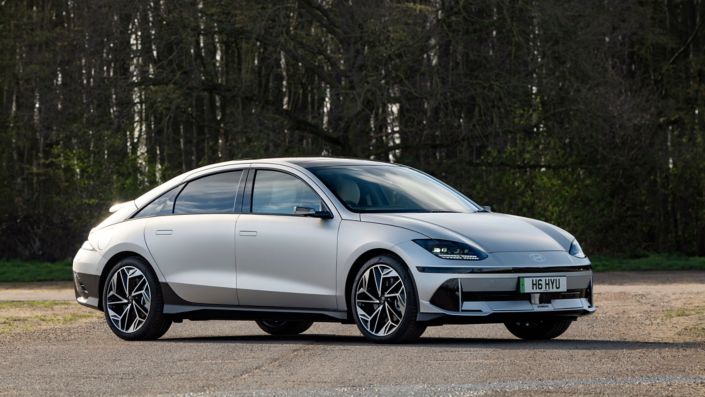- IONIQ 6 delivers an impressively low 0.21 drag coefficient and AER of 614 km (WLTP-rated) on a single charge
- Hyundai’s Electrified Streamliner achieves this through 1930s-style aerodynamic design and technological advances that are functional and aesthetically pleasing
- Designers used ‘morphing technique’ to develop optimal rear spoiler shape and several other advanced aerodynamic solutions
When the designers and aerodynamic engineers at Hyundai Motor Company set out to create an electric vehicle with low wind resistance and a high all-electric range (AER), they looked at some of the most streamlined shapes in automotive and aircraft history, as well as in nature. As a result of their efforts, IONIQ 6 achieves an impressively low 0.21 drag coefficient and AER of 614 km (WLTP-rated) on a single charge.
While aerodynamic efficiency is important for every vehicle’s fuel economy, it is especially critical for an EV’s AER due to the weight of the battery system. Not only does aerodynamic efficiency affect AER, but it also has a significant impact on power performance, driving stability and driving/wind noise. By excelling at aerodynamic performance, IONIQ 6 delivers what Hyundai’s designers call ‘emotional efficiency’ with simple yet sensuous curves and technological advances that are both functional and aesthetically pleasing.
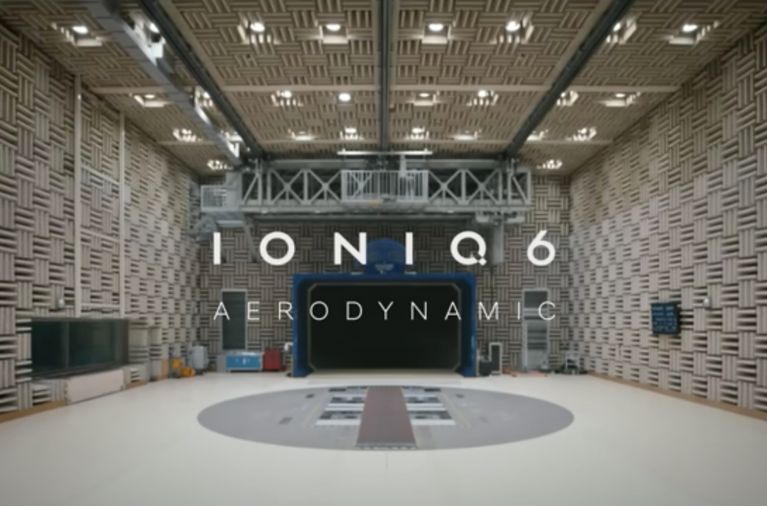
The return of the Streamliner
Simon Loasby, Hyundai’s Head of Styling, cites the 1947 Stout Scarab, Phantom Corsair and Saab Ursaab as major influences on IONIQ 6’s sleek design. Those iconic ‘Streamliner’ cars epitomise the functionally efficient aesthetic on wheels. It’s easy to see how the symmetry and relative simplicity of their contoured shapes found their way onto Hyundai’s new Electrified Streamliner.
IONIQ 6 started with a single curve that defines its profile and architecture – the ultimate streamlined form – and ‘Electrified Streamliner’ became the pet name for the car,. The true beginning of aerodynamic design and engineering started in the 1930s and we felt that taking inspiration from that era – and indeed from nature – was the perfect way to create uniqueness and sustainable performance in the EV segment.

Simon Loasby
Another key influence was the Supermarine Spitfire, a famous World War II British fighter plane. Designers applied a Spitfire-inspired winglet to the side of IONIQ 6’s rear spoiler to absorb the air flow from the roof and reduce drag by minimising vortices at the spoiler’s tip. This technology also effectively reduces the eddy currents generated from the side of the vehicle, helping to reduce drag.
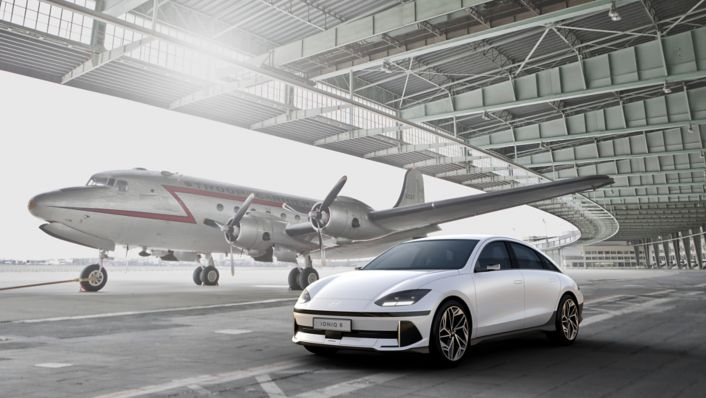
The car itself has a streamlined shape like the wing of an airplane, so when running fast, lift is generated aerodynamically by the difference in pressure between the top and bottom of the vehicle. The downforce generated by IONIQ 6’s rear spoiler reduces lift even during high-speed driving to ensure stability.
The Spitfire wasn’t the only high flyer on the design team’s radar during IONIQ 6’s development. They also took notes from nature too, especially the shape that a peregrine falcon takes when it dives after prey at 390 km/h.
Chasing a new low in aero efficiency
Once Hyundai’s Design team finished its initial work on IONIQ 6’s exterior, they entered the wind tunnel, facing winds of up to 200 km/h generated by a 3400-HP fan, to chase another 10 per cent of efficiency with the help of Hyundai’s aerodynamic engineers.
For the rear spoiler and several other advanced aerodynamic solutions, they used what is known as the ‘morphing technique’, which is a shape transformation technology, and computational fluid dynamics (CFD) analysis using a supercomputer. This allowed the designers to select the optimal spoiler shape from about 70 different options. It also enabled the application of an active air flap, wheel air curtains, wheel gap reducers, separation traps and wheel deflectors to problem areas.
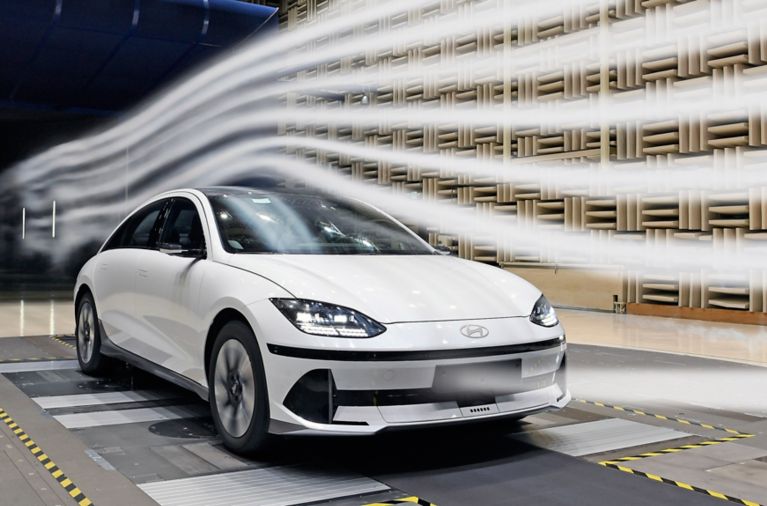
The active air flap (AAF) on the front bumper is used to reduce cooling resistance, which accounts for more than 20 per cent of total air resistance. The AAF opens when the cooling system needs to run and closes when it is not necessary to reduce air resistance. As an EV, IONIQ 6 has a relatively small area that needs to be cooled compared to an internal combustion engine vehicle. Therefore, the team was able to apply an external AAF to raise the cooling efficiency by distributing the airflow when it opens. When the flap is open, it acts as a flow guide vane so that air can easily enter the radiator. When the flap is closed, the valley-like shape of the AAF is designed to guide the airflow into the tilted air-intake and works in conjunction with the wheel air curtain and wheel gap reducer to improve aerodynamic performance.
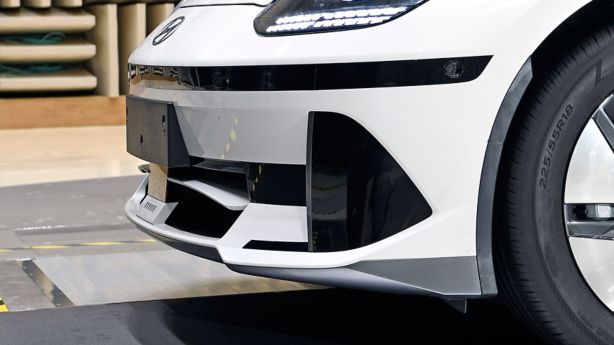
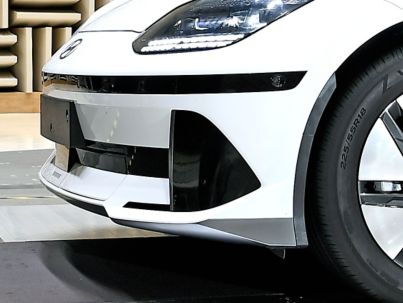
Left: Closed active air flap Right: Open active air flap
The wheel air curtain, designed to naturally connect with the active air flap, features a vented hole in the side rather than the front of the vehicle. When the air flaps are closed, the air flow is concentrated on the front of the vehicle and the pressure generated is distributed to the wheel air curtains, while the air that has escaped laterally through the air curtains flows to the outside of the tyre, effectively reducing air resistance.
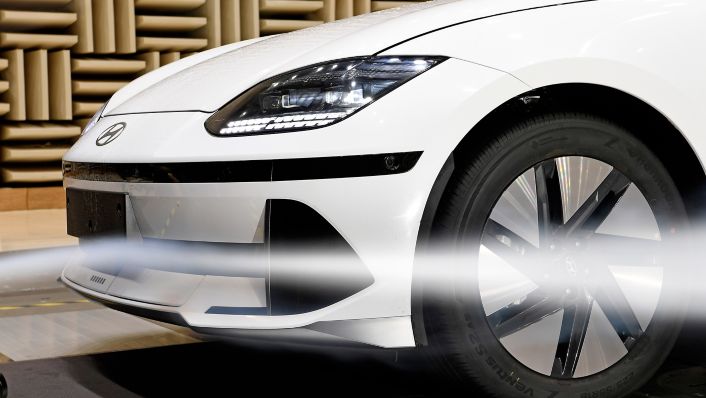
Wheel air curtain
IONIQ 6 has a relatively short front overhang as the wheelbase has been lengthened to maximise interior space, which created an aerodynamic challenge. To address this issue, the team devised a wheel gap reducer to minimise the space between the front bumper and tire and applied this passive flow control technology to IONIQ 6 for the first time. As this solution effectively extends the ends of the front bumper, the air flow from the front does not separate from the wheel but flows seamlessly over it.
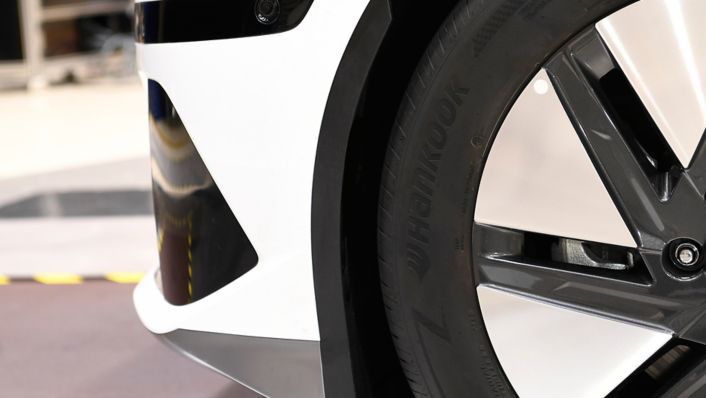
Wheel gap reducer
While it is not easy to reduce the gap in the upper part of the wheel due to tyre and body interference caused by the vertical suspension movement while driving, the wheel gap reducer at the front part of the wheel well helps reduce air resistance.
The team also applied a separation trap between IONIQ 6’s rear combination lamp and the lower part of the rear bumper to achieve a breakthrough in aerodynamic performance while maintaining the pure volume of the vehicle body. The trap is designed to guide air flow more smoothly by applying a line that coincides laterally with the tip of the rear spoiler to drop the flow of air to the side of the vehicle in a consistent position. This, along with the air diffused at the tip of the rear spoiler, helps reduce drag.
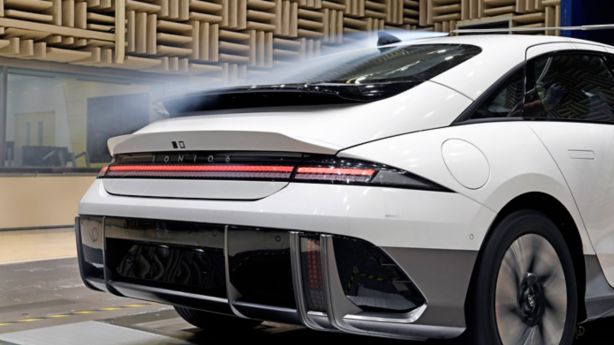
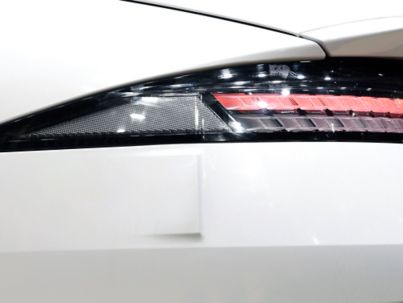
Left: Separation trap Right: Rear spoiler
The aerodynamic design is executed extensively, even underneath the car. IONIQ 6 is equipped with an undercover that blocks the front of the lower part to improve air flow, and the most important item in the lower part is the diffuser under the rear bumper. Besides the full cover of the undercarriage, Hyundai’s efforts to achieve better aerodynamics is evident in the optimised front wheel deflector and minimised wheel guard gap. In addition, the shape of IONIQ 6’s wheel deflector was optimised, and the underbody covering was carefully finished to complete the aerodynamic performance.
In the EV era, air resistance is more important than any other performance. Through their collective efforts, Hyundai’s aerodynamic engineers and designers have achieved with IONIQ 6 a new benchmark for Hyundai and the IONIQ dedicated EV line-up brand.

